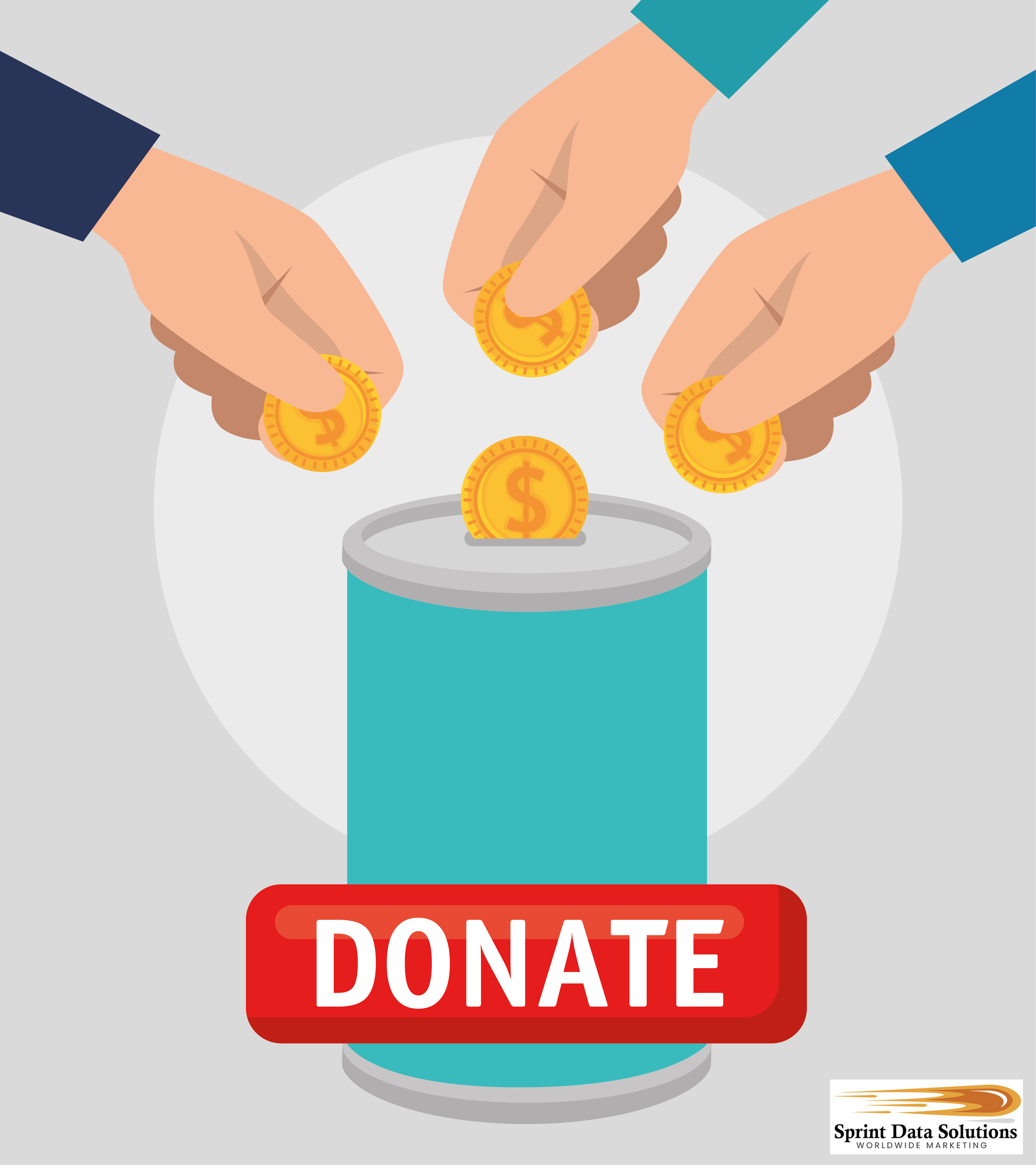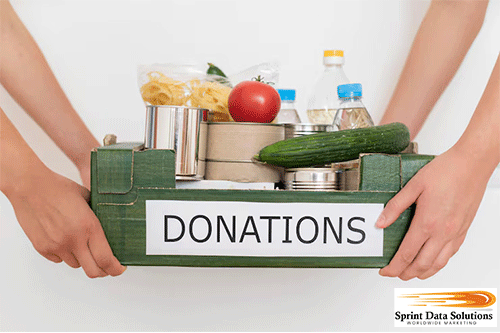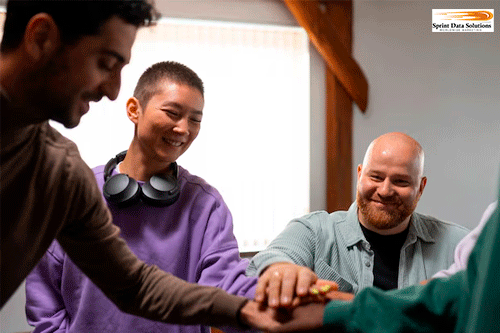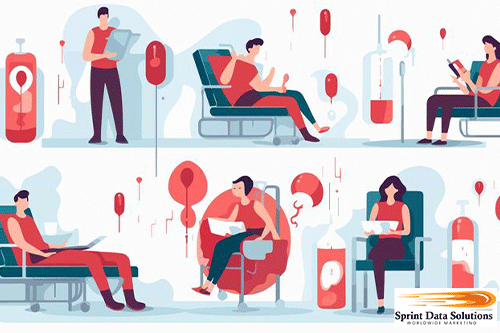The Best Way To Get The Most Donations Is To Find The Right Donors
One of the undeniable truths of the world is that not every organized endeavor is meant to generate profit. In fact, many efforts deliberately sideline profitability in favor of more altruistic goals, where the objective is to provide assistance rather than accumulate financial gain. Charitable organizations are a prime example of this, where large, well-coordinated groups come together to channel funds, resources, and time toward addressing societal challenges. These organizations operate with a singular mission—whether it’s offering sanctuary to abused or stray animals, providing disaster relief, or improving access to clean water in underdeveloped regions. Their focus is often on human or environmental welfare, targeting specific areas like poverty alleviation, educational empowerment, healthcare access, or environmental conservation. For instance, charities working in low-income communities may strive to enhance education by building schools, supplying materials, and offering scholarships, recognizing that education is a key driver of future success. Similarly, medical charities may provide essential care in remote regions, combating diseases or offering life-saving treatments that would otherwise be inaccessible. These efforts are funded largely by donations from individuals, businesses, and governments, and are supported by volunteers who contribute their time and expertise. By addressing critical needs that are often neglected by for-profit enterprises or government services, charitable organizations play a pivotal role in improving lives and promoting long-term societal progress.
The unfortunate reality is that while these charitable ventures are rooted in noble intentions and serve highly worthy causes, they still need financial resources to operate effectively. No matter how selfless the mission, whether it’s providing clean water, shelter, or educational opportunities, these organizations require funding to cover operational costs, from paying staff and maintaining facilities to purchasing supplies and delivering aid. Since they do not generate revenue in the traditional business sense, they rely heavily on external funding, making donations absolutely critical to their survival. This funding can come from a variety of sources—individual donors, corporate sponsorships, government grants, and philanthropic foundations. Beyond monetary contributions, many charities also receive in-kind donations, such as goods or services, which can be equally valuable in offsetting costs. Additionally, fundraising events, crowdfunding campaigns, and partnerships with businesses help raise the necessary capital to keep their operations running. Without this financial support, even the most impactful organizations can struggle to maintain their programs, making donations not just a supplementary resource, but a lifeline. Charities must also manage their finances carefully, balancing the need to fund their programs with the necessity of covering administrative expenses, ensuring that donations are maximized for the greatest possible impact.

A Spectrum Of Worthy Causes
One of the most valuable things charities provide to the American public is the opportunity to contribute to a wide range of important causes. From healthcare initiatives and educational programs to environmental conservation and disaster relief, nearly every aspect of American society can benefit from charitable contributions. Even small donations, when pooled together from many individuals, can create a significant impact, funding critical services and projects that may otherwise go unsupported. In addition, large corporations and wealthy individuals often allocate a portion of their earnings to philanthropic efforts, further amplifying the reach and effectiveness of these charities. Beyond individual donations, corporate social responsibility programs and charitable foundations have become important channels for funneling substantial resources into causes that align with their values or address pressing societal needs. Organizations like Sprint Data Solutions Worldwide Marketing play a crucial role in this ecosystem by providing data-driven solutions to help charities reach potential donors more effectively. Their comprehensive database services enable charitable organizations to target specific demographics, ensuring that fundraising efforts are directed at those most likely to support their cause, maximizing the potential for meaningful financial contributions. Through these targeted strategies, charities can make an even greater difference, driving positive change across diverse areas of society list of donors for various causes, including:
Donor Mailing Lists
For those interested in identifying donors across various causes, there exists a comprehensive and expansive list of individuals and businesses that contribute to charitable efforts, encompassing every income level and sector. The United States is home to millions of donors spread across all regions, representing a wide range of philanthropic interests and capacities. These donors support causes as diverse as healthcare, education, environmental protection, social justice, and more. To effectively engage with this vast pool of potential supporters, it’s crucial to refine and target the list based on specific criteria. This can include geographic location, ensuring that outreach efforts are focused on donors within a particular state, city, or even neighborhood. Additionally, demographic factors such as age, gender, and income level can be critical in tailoring appeals to resonate with specific groups. Combining these metrics allows for a highly targeted approach, enabling charities and organizations to connect with donors who are most likely to align with their cause and contribute meaningfully. Leveraging advanced data analytics, organizations can not only identify these key donors but also understand their giving patterns, preferences, and motivations, leading to more effective and personalized fundraising strategies. This level of precision is essential for maximizing the impact of fundraising campaigns, ensuring that resources are allocated efficiently and that the most promising donor prospects are engaged.
Food Bank Donors

While every American aspires to maintain a stable income that provides for basic needs, including putting food on the table—particularly when there is a family to care for—this ideal is not always achievable. Economic instability, unexpected layoffs, natural disasters, and personal hardships such as illness or injury can quickly turn what once seemed like a secure situation into a struggle for survival. In many cases, even hardworking individuals may find themselves facing food insecurity due to rising costs of living or insufficient wages that fail to keep pace with inflation. For those affected, securing daily meals becomes a daunting challenge, and in extreme cases, access to regular, nutritious food may become impossible without external help. Food banks, government assistance programs, and community support organizations step in to bridge this gap, providing much-needed relief to families and individuals. These safety nets are crucial, but they often operate under strain, especially during times of widespread economic downturns or disasters. The support of charitable donations and volunteer efforts is essential to keep these programs running, ensuring that vulnerable populations do not fall through the cracks. By addressing food insecurity through both short-term relief and long-term solutions, such as job training programs and affordable housing initiatives, communities can help create a more stable future for those at risk.
Many people feel a deep sense of responsibility to assist those who are struggling to meet the most basic human need—access to food. Whether through donating money, non-perishable food items, or volunteering their time, countless individuals are committed to helping those who cannot rely on having a guaranteed next meal. This generosity extends across all income levels and backgrounds, uniting people in a common cause to fight hunger and food insecurity. Food banks and pantries, which are established in virtually every major urban center and many rural areas, play a critical role in distributing these donations to those in need. These organizations serve as lifelines for families, individuals, and children who otherwise might go hungry. The ability to contribute to a food bank is made even easier by the widespread availability of these centers, allowing donors to choose locations based on proximity, specific community needs, or personal connection to the cause. Many food banks also partner with local businesses, schools, and grocery stores to extend their reach and ensure that donations go directly to those most in need. By focusing on both immediate relief and longer-term strategies to combat hunger, these efforts help foster stronger, more resilient communities.
Homeless Shelter Donors
Homelessness has become an increasingly urgent issue, particularly in major urban centers where the lack of affordable housing, economic inequality, and mental health challenges converge. For those living without shelter, every day presents a battle for survival, but the dangers are even more pronounced during certain times of the year, such as winter. Exposure to freezing temperatures, snow, and rain puts the homeless population at severe risk of hypothermia, frostbite, illness, and in extreme cases, death. Prolonged exposure to the elements, coupled with a lack of access to basic necessities like warm clothing, food, and medical care, can be life-threatening. Shelters and outreach programs become critically important during these periods, offering temporary housing, meals, and medical attention to those in need. However, many shelters are overcrowded, and resources are stretched thin, especially during peak demand seasons. Charitable organizations, government programs, and community volunteers play a vital role in providing not only immediate relief—such as blankets, coats, and hot meals—but also long-term solutions aimed at addressing the root causes of homelessness. Initiatives focused on mental health support, affordable housing projects, and job training are essential in breaking the cycle of homelessness and ensuring that those affected can rebuild their lives with dignity and stability. The involvement of individuals, businesses, and policymakers is key to tackling this complex issue and ensuring that no one has to face life-threatening conditions simply because they lack a home.
Homelessness arises from a variety of complex circumstances, including fleeing domestic abuse, untreated mental illness, or financial hardships that make it impossible to maintain housing. People from all walks of life can find themselves in these difficult situations, as homelessness is not confined to any specific demographic and affects cities and communities across the country. For some, a sudden job loss or medical emergency can trigger financial instability, while for others, long-standing systemic issues like affordable housing shortages and a lack of mental health services contribute to the problem. Homeless shelters and outreach programs exist in nearly every city in America, providing vital temporary relief in the form of food, shelter, and basic healthcare. In addition to offering emergency assistance, many of these shelters also focus on long-term solutions, helping individuals transition into stable housing, find employment, and access mental health or addiction services. These programs play a crucial role in not just addressing the immediate crisis but also in offering pathways to self-sufficiency. The public’s willingness to donate both money and time to these causes is invaluable. Volunteers and donors provide critical support to the overburdened shelter systems, enabling them to extend their reach and improve the lives of those in need. In doing so, they become part of a broader effort to combat homelessness and ensure that more individuals and families have the opportunity to regain stability and security in their lives.
Animal Abuse Donors
Many Americans have a deep affection for animals, with countless households including beloved pets like dogs, cats, and other companions. Even among those who don’t consider themselves ardent animal lovers, there is often a shared sense of empathy and compassion toward animals. The majority of people harbor no ill will toward animals and believe they deserve humane treatment and care. This widespread sentiment is a significant reason why the response to animal abuse is so strong when it comes to charitable giving and volunteerism. When people learn about facilities that care for abused or neglected animals—such as rescue shelters, rehabilitation centers, or sanctuaries—their desire to help is often immediate and heartfelt. Donations flow in to support these organizations, enabling them to provide medical treatment, shelter, and a chance at a new life for animals that have suffered mistreatment. In addition to monetary contributions, many individuals volunteer their time, helping with tasks like feeding, grooming, and rehabilitating the animals, or assisting with adoption events. The public’s support for these causes reflects a broader societal value that animals deserve protection and care, and this collective effort not only helps individual animals in need but also strengthens advocacy for stricter laws and penalties against abuse, ultimately leading to a safer world for all animals.
For any American who owns a dog, cat, or other cherished pet, witnessing or hearing about animal abuse can evoke feelings of outrage and sadness, often on par with the distress caused by abuse involving children or partners. Pets are considered family members by many, and the idea of an animal suffering mistreatment, neglect, or cruelty is both shocking and deeply unacceptable. This strong emotional connection is why so many Americans are moved to act when they learn about cases of animal abuse or neglect. Countless individuals are willing to donate to animal rescue organizations, shelters, and advocacy groups that work to protect and rehabilitate abused animals. These donations fund critical services, such as medical care, shelter, and rehabilitation for animals who have been rescued from harmful environments. In addition to financial support, many people volunteer their time at animal shelters, rescue operations, or fostering programs, directly contributing to the care and rehabilitation of these animals. Volunteers help in a variety of ways, from walking dogs and cleaning cages to assisting with adoption events or even fostering animals in their homes until a permanent placement can be found. Public awareness and support for animal welfare causes have led to stronger animal protection laws and greater accountability for abusers. The collective efforts of donors, volunteers, and advocacy groups help ensure that more animals are given a second chance at life, free from harm and surrounded by the care they deserve.

Women’s Shelter Donors
While America continues its pursuit of equality, achieving it remains a complex and ongoing challenge. Tragically, women, especially in cases of domestic violence, still bear a disproportionate share of abuse. The statistics show that women are more likely to suffer at the hands of an abusive partner, and for many, the only option to escape the violence is to leave. However, leaving often brings its own set of hardships, as women may find themselves with nowhere to go and little support. For those who are determined to prevent women from becoming homeless after fleeing abuse, women’s shelters provide a vital lifeline. These shelters are specifically designed to offer a safe and secure environment for women and, in many cases, their children, giving them temporary housing while they figure out the next steps. Beyond just providing a roof over their heads, these shelters serve an even more critical role by offering a sanctuary where abusers cannot easily find or harm them. Many shelters also provide additional services, such as counseling, legal assistance, and job training, helping women rebuild their lives and regain independence. By offering both immediate relief and long-term support, these shelters play an essential role in breaking the cycle of abuse and helping women create safer, more stable futures for themselves and their families.
Emergency Disaster Donors
Anyone following the news is well aware that different regions of the United States are often hit by major natural disasters that leave entire communities devastated. Whether it’s the raging wildfires in California, hurricanes battering the Gulf Coast, or tornados tearing through the Midwest, these events wreak havoc on a massive scale. In moments like these, people can lose everything in a matter of hours, fleeing their homes with little more than their lives. Unlike homelessness caused by poverty, addiction, or other social issues, these victims are displaced through no fault of their own—nature has simply taken everything from them. The challenge with natural disasters is the sheer scale of destruction, often impacting thousands or even millions of people simultaneously, overwhelming emergency services and humanitarian aid efforts. This mass displacement creates an urgent need for immediate relief, including temporary housing, food, medical care, and emotional support. Americans outside of the affected areas are often eager to help, driven by compassion and a sense of solidarity. Many are willing to donate money, essential goods, or food to support disaster relief efforts. Others go even further, volunteering their time to assist with clean-up operations, distribution of supplies, or providing comfort to those affected. National and local charities, government agencies, and volunteer organizations all work together in these critical times, but the generosity of everyday citizens plays an essential role in helping survivors rebuild their lives after the storm has passed.
Corporate Donors

It’s not only private individuals who contribute to charitable causes; corporations also play a significant role in philanthropic efforts. Just as wealthy individuals can benefit from tax deductions on charitable donations, businesses are also eligible for similar tax incentives. This makes corporate contributions a viable and often substantial source of support for charities and non-profit organizations. In fact, many corporations have formalized corporate social responsibility (CSR) programs, which not only encourage charitable giving but also align with their business values, fostering goodwill among customers and employees. When seeking larger donations, corporations can be just as important to approach as affluent private donors, often offering significant financial backing, in-kind donations, or volunteer resources. Additionally, corporations may engage in matching gift programs, where they match the donations made by their employees to amplify the impact of charitable efforts. Beyond financial contributions, companies may also offer expertise, manpower, and logistical support to help causes achieve their goals more effectively. By building partnerships with businesses, charities can secure long-term, sustainable support that not only benefits the organization but also enhances the corporation’s reputation for social responsibility. These relationships can create a powerful synergy, where businesses and non-profits work together for the greater good, achieving a scale of impact that neither could reach alone.
Corporate donations can often extend beyond simple financial contributions and be even more impactful when aligned with the company’s core products or services. In some cases, these in-kind donations can be far more valuable than money alone, as they address urgent, specific needs in times of crisis. For example, following a natural disaster such as a hurricane, when people are left without access to basic necessities like food and clean water, a company in the food and beverage industry can step in and provide immediate relief by donating food, bottled water, or other essential supplies. These tangible contributions are not only more practical but can be lifesaving in the short term, directly addressing the most pressing concerns of affected communities. Similarly, a company that specializes in construction materials or tools might donate supplies to help rebuild homes and infrastructure after a disaster, while a technology firm might offer communication tools or services to aid in relief coordination. These targeted contributions often have a greater and more immediate impact than financial donations, as they can be deployed directly to alleviate the situation at hand. In many cases, corporate partnerships with non-profits or government agencies ensure that these resources are distributed efficiently and effectively, maximizing their value. By leveraging their specific expertise, products, and services, corporations can offer critical support in ways that are uniquely suited to their capabilities, making them indispensable partners in disaster relief and humanitarian efforts.
Medical Donors
Medical treatment is another critical area where many Americans require financial assistance, often under dire circumstances. Some individuals face life-threatening conditions requiring expensive, life-saving treatments that are beyond their financial reach. Others may need surgeries or medical interventions that could significantly improve their quality of life—such as a procedure to restore mobility in a damaged limb—but find themselves unable to afford the high costs involved. Beyond chronic health issues, unexpected events such as accidents or natural disasters can leave individuals or their family members in need of urgent medical care, yet without the necessary funds or insurance coverage to handle such emergencies. For these individuals, the inability to pay for medical treatment can mean the difference between life and death, or enduring prolonged suffering that could otherwise be alleviated with proper care. Charitable organizations, crowdfunding platforms, and specialized medical funds often step in to help cover these costs, while hospitals and medical providers sometimes offer assistance through financial aid programs. Additionally, corporate philanthropy and donations from the public can make a meaningful difference, providing financial relief for individuals in need of surgeries, medications, or rehabilitative care. These support systems are essential in helping bridge the gap for those who would otherwise fall through the cracks of the healthcare system, offering them a second chance at health and recovery. Without these resources, many Americans would be left without access to the medical treatments they urgently need.
Helping individuals regain their health and well-being is a cause that resonates with many Americans, who are often eager to contribute to medical-related donations. However, the field of medical donations is vast and diverse, encompassing a wide array of causes. Some donors are drawn to support large-scale organizations dedicated to researching treatments and cures for devastating diseases like cancer, Alzheimer’s, or diabetes. These groups are at the forefront of scientific advancement, using donations to fund cutting-edge research, clinical trials, and innovative therapies that may one day eradicate these conditions. On the other hand, some individuals prefer to focus their contributions on more personal, immediate causes, such as donating to crowdfunding campaigns for people facing urgent medical needs, from life-saving surgeries to ongoing treatments for chronic illnesses.
In addition to these, there are numerous other areas where medical donations can make a profound difference. For example, some donors choose to support organizations that provide healthcare to underserved populations, such as free clinics or global health initiatives in impoverished regions. Others may focus on mental health, funding programs that offer counseling, support, and resources for individuals struggling with mental health disorders. Donations can also target specific issues like providing prosthetics to veterans, helping disabled individuals gain access to mobility aids, or supporting pediatric care for children with rare diseases.
This vast array of options allows donors to align their contributions with the causes that matter most to them, whether that’s advancing medical research, supporting individuals in urgent need, or addressing systemic healthcare inequalities. As a result, medical donations have the power to touch lives in countless ways, from funding breakthroughs that may save millions to offering direct, life-changing support to those in immediate crisis.
Special Issues Donors
In addition to ongoing medical needs, there are often specific and timely issues that arise, sparking immediate public attention and a surge of donations. These situations may not be related to long-term crises but instead demand urgent action and resources. For instance, when children become trapped in hazardous environments, such as mines, caves, or collapsed structures, the rescue efforts require specialized equipment and highly trained personnel. Funding is essential to cover the costs of advanced rescue tools, safety gear, and the logistical needs of the rescue teams, such as food, shelter, and transportation. In these high-stakes scenarios, donations can make an immediate impact, providing the necessary resources to save lives in real-time.
Similarly, certain causes may emerge from current controversies or publicized events, motivating people to contribute. These might include legal battles related to human rights, environmental conservation efforts in response to a sudden threat, or community-led initiatives to address social justice issues. Even when the situation isn’t an emergency, such as a campaign to preserve historical landmarks or support arts programs, these causes still require public and private donations to be successful.
What makes these timely causes so compelling is the sense of urgency and the belief that contributions can lead to swift, tangible outcomes. When the public rallies behind a cause—whether it’s a high-profile rescue operation or a pressing societal issue—the influx of donations can help mobilize teams, secure essential supplies, and drive rapid progress. These situations remind people of the power of collective action, where even small donations contribute to making a significant difference in times of immediate need.
In some cases, donations are not driven by emergencies or time-sensitive crises but instead support longstanding causes that continually require financial backing to sustain their efforts. Civil rights organizations, for instance, rely on ongoing donations to address issues related to sexual, racial, or religious discrimination and the denial of fundamental rights. Whether it’s fighting for equal voting rights, challenging unjust laws, or providing legal assistance to marginalized groups, these organizations need consistent financial support to keep their advocacy and educational efforts moving forward, especially when public controversies bring these issues into the spotlight.
Other causes that generate strong opinions and consistent funding are rooted in deeply held beliefs. For example, both pro-life and pro-choice movements actively seek donations to support their respective positions on abortion rights, funding everything from educational campaigns to legal battles. Similarly, organizations on both sides of the gun control debate receive substantial contributions from donors who are passionate about their stance on firearm regulations. These issues, among others, such as climate change advocacy, LGBTQ+ rights, and immigration reform, are part of the larger tapestry of societal debates that always require funding to influence public opinion, policy changes, or provide support to affected individuals.
What makes these causes distinct is their ability to attract sustained financial support from people and organizations who are dedicated to driving change over the long term. Whether it’s maintaining public awareness, funding legal actions, or providing resources to communities in need, these causes often represent enduring struggles that need constant attention and financial resources to advance their goals. As new developments and controversies arise, donations play a crucial role in ensuring that these organizations can continue their work, advocate for change, and defend the rights and values they represent.
Veteran Donors
Many Americans hold deep respect for military veterans who have risked their lives in service to the country. Unfortunately, despite their sacrifices, veterans are not always provided with the care and support they need once their military service ends. For some, the physical and emotional trauma experienced during their time in the military makes the transition to civilian life incredibly challenging. Many veterans return home facing a range of difficulties, from post-traumatic stress disorder (PTSD) and physical injuries to substance abuse and financial instability. While they may need comprehensive assistance—whether financial aid, psychological counseling, medical treatment, or spiritual guidance—these crucial services are often lacking or difficult to access.

This lack of adequate support can lead to devastating outcomes, including homelessness, unemployment, and deteriorating mental health for veterans who have already given so much. Organizations dedicated to veteran support work tirelessly to fill these gaps by offering resources such as job training, counseling, housing assistance, and healthcare. These services are essential for helping veterans regain their footing and reintegrate into civilian life with dignity. Unfortunately, the demand for such support often outstrips the resources available, making public donations and volunteer efforts critical to sustaining these programs. By contributing to veteran-focused charities, Americans can help ensure that those who have served the country receive the care, respect, and assistance they deserve, empowering them to rebuild their lives and find peace after their service.
Tragically, the system sometimes fails those who risked their lives to protect it, leaving veterans without the support they desperately need. Whether due to underfunded programs or bureaucratic barriers, many veterans struggle to receive the care and assistance they deserve after returning to civilian life. However, there are many Americans who recognize this injustice and are committed to making a difference. These individuals and organizations step in, offering financial contributions to veteran-focused charities and services. Their donations help ensure that veterans, who sacrificed so much to defend the nation’s freedoms, receive the medical care, psychological counseling, and job training they need to successfully reintegrate into society. Through these efforts, everyday citizens are helping to bridge the gap, ensuring that veterans are not left behind and have the resources necessary to rebuild their lives with dignity and purpose.
COVID-19 Donors
The rise of COVID-19 in recent years has created an unprecedented global crisis, forcing businesses and individuals to adapt to a dramatically altered way of life. Many people, including those who were previously non-disabled, faced significant challenges as the pandemic reshaped daily routines, economic structures, and healthcare systems. Though the worst of the pandemic may be behind us, the toll has been staggering, with over a million Americans losing their lives to the virus. Even more concerning is the long-term impact on many survivors, as countless individuals have been left debilitated by post-COVID conditions, commonly known as “long COVID.” These individuals, once healthy and active, now struggle with chronic fatigue, respiratory issues, and other debilitating symptoms that prevent them from resuming their normal lives. The aftermath of the pandemic has created a new population of people requiring medical care, rehabilitation, and ongoing support to manage their health. As the country moves forward, addressing the long-term consequences of COVID-19, including the care of those affected, remains a critical challenge for healthcare providers and policymakers alike.
One notable after-effect of the virus is “Long COVID,” a condition that brings a range of persistent symptoms such as difficulty breathing, chronic fatigue, and cognitive issues like “brain fog,” which hinders concentration and clear thinking. While not directly life-threatening, these symptoms can be debilitating and significantly disrupt daily life. Many individuals suffering from Long COVID find themselves unable to return to work or maintain their previous levels of productivity, leaving them struggling both financially and emotionally. This condition has effectively sidelined once-healthy individuals from the workforce, creating a new population of people who require ongoing medical care, rehabilitation, and financial assistance to manage their lives. The long-term nature of these symptoms poses a serious challenge for the healthcare system and society as a whole, as those affected by Long COVID face the reality of needing support to remain afloat and navigate a drastically altered future.
Paralysis Donors

Many Americans experience a loss of full mobility, something most people often take for granted, due to various causes such as congenital conditions, illness, or traumatic accidents. This loss can manifest in different forms, such as partial paralysis, where certain areas of the body—like fingers or toes—lose functionality, limiting movement and dexterity. In more severe cases, individuals may face total paralysis, affecting larger portions or even the entirety of their body. Whether partial or complete, these mobility impairments dramatically alter daily life, making routine tasks challenging or impossible without assistance. Those affected often require extensive medical treatment, rehabilitation, and adaptive technologies like wheelchairs or prosthetics to regain some level of independence. The emotional and financial toll on individuals and their families is immense, often requiring long-term support, both from the healthcare system and broader community, to help them navigate their new reality and maintain quality of life.
The most severe cases of paralysis include paraplegia, where an individual loses the ability to use their legs and relies on a wheelchair, and quadriplegia, where paralysis extends to the neck, leaving the person confined to a bed and dependent on others for virtually all aspects of daily care. People living with paralysis face significant challenges, not only in terms of mobility but also in meeting their extensive physical and medical needs. These needs can range from specialized medical equipment, home modifications, and full-time caregiving to ongoing physical therapy. Unfortunately, the financial burden of managing paralysis is immense, and the funds available through insurance or personal resources often fall far short of covering these essential costs. In many cases, people with paralysis find themselves struggling to afford basic necessities, such as food, housing, and medical care. Donations can be a lifeline for individuals in these situations, providing the crucial financial support needed to maintain a decent quality of life. Without this assistance, some may face the grim reality of depleting their resources and potentially becoming homeless. Charitable contributions help bridge the gap, offering paralyzed individuals the chance to live with dignity and access the care they need to survive.
Special Olympics Donors
The traditional Olympics are a global celebration of athletes who push their bodies and minds to achieve extraordinary feats, surpassing the limits of what most people can accomplish. In contrast, the Special Olympics celebrate a different kind of perseverance and triumph. Here, athletes face and overcome challenges that go beyond typical human limitations, as they compete while managing physical or intellectual disabilities. The Special Olympics highlight the incredible determination and resilience of individuals who not only excel in their sports but also rise above obstacles that most of us never encounter, showcasing the power of the human spirit.
Whether it’s athletic competitions for individuals with intellectual disabilities or basketball games for wheelchair users, the Special Olympics serves as a powerful testament to people overcoming obstacles that would challenge most. These athletes demonstrate resilience, strength, and perseverance, inspiring audiences worldwide. However, unlike the traditional Olympics, the Special Olympics often receives less media coverage and significantly less funding. This lack of attention makes donations crucial to ensuring the continued success of these events. Many Americans are passionate about supporting the Special Olympics, recognizing the importance of giving individuals with disabilities the opportunity to shine and excel in ways that everyday life may not always allow. Contributions help provide necessary resources, equipment, and training to allow these athletes to achieve their full potential and showcase their extraordinary abilities on a global stage.
Children’s Lunch Program Donors
It is often said that children are the future of any nation, and ensuring they receive a quality education is essential to that future. However, education alone is not enough—proper nutrition plays a critical role in a child’s ability to learn and thrive. A hungry child cannot focus in the classroom, and their academic performance is likely to suffer as a result. For many families facing financial hardship, providing consistent, nutritious meals can be a challenge. Some families are forced to make difficult sacrifices, such as cutting back on food in order to afford other essentials like rent or utilities. This creates an unfortunate situation where children, who need nourishment to grow and concentrate, go to school hungry, unable to reach their full potential. Addressing both educational needs and food security is key to helping children succeed. Programs that provide school meals, community food drives, and donations to support low-income families can make a significant difference, ensuring children are not forced to choose between education and hunger. These efforts help create an environment where every child has the foundation to succeed both in and out of the classroom.
School lunch programs and similar initiatives offered by organizations provide essential support to children who may lack access to nutritious meals at home. These programs ensure that children receive a healthy, balanced lunch, which is crucial for maintaining focus, energy, and well-being throughout the school day. However, running such programs requires substantial resources, from purchasing fresh ingredients to covering the costs of meal preparation and distribution. The financial demands of these ventures are considerable, making donations a critical source of support. Contributions from individuals, businesses, and charitable organizations help keep these programs running smoothly, allowing them to reach more children in need. Donations not only enable the purchase of food but also help fund essential services like staffing, equipment, and logistical efforts to ensure meals are delivered efficiently and safely. By supporting these initiatives, donors play a key role in combating childhood hunger and ensuring that children can focus on their education rather than their empty stomachs. These efforts are vital in creating a more equitable environment where all children have the opportunity to thrive.
Unwed Mother Donors
While many Americans continue to uphold the ideal of the traditional nuclear family, the reality is that some women, often through difficult or traumatic circumstances, find themselves raising a child on their own. Domestic violence, abusive relationships, and, in the most devastating cases, rape, can leave a woman with the responsibility of caring for a child without the support of a partner. The emotional and financial challenges of single parenthood are immense, and when compounded by trauma, the experience can become overwhelming. Raising a child is inherently demanding, but doing so in the wake of abuse or other life-altering events adds a layer of difficulty that many struggle to navigate. These women often need more than just financial assistance; they require emotional support, counseling, and community resources to help them heal and provide for their children. Programs and organizations dedicated to supporting single mothers, particularly those who have faced trauma, play a vital role in offering services such as childcare, job training, and mental health support. These efforts are essential in helping women rebuild their lives while ensuring their children are cared for in a nurturing environment. Donations to these causes can make a profound difference, offering both immediate relief and long-term support to women who have been left to shoulder the burden of parenthood alone.
Fortunately, many Americans are eager to offer support to those in need. Unwed mothers, despite facing significant challenges, can still provide a loving and stable life for their children, but they often require financial assistance to do so. For those who believe that everyone, regardless of their circumstances, deserves a fair opportunity—especially innocent children—offering help to single mothers can have a profound impact. Donations to organizations that support unwed mothers provide access to essential resources such as childcare, education, housing, and healthcare, giving them the tools to build a better future for themselves and their children. This support not only alleviates immediate financial stress but also empowers mothers to become self-sufficient and create a nurturing environment for their children. By contributing to these efforts, donors are not just helping individual families; they are investing in America’s future by ensuring that all children, regardless of their upbringing, have the opportunity to grow up in a secure and supportive home.
Church Donors
Many Americans continue to hold strong religious beliefs, but the landscape of faith in the country has become increasingly diverse. Christianity remains the predominant religion, yet even within this broad category, there is a wide range of denominations and practices. Traditional branches such as Catholicism and Protestantism coexist with newer, distinctly American-born movements like Evangelical Christianity and Mormonism. This diversity reflects the evolving spiritual needs and preferences of the population, with each denomination offering its own interpretation of religious teachings, worship styles, and community engagement. Beyond Christianity, the religious tapestry in America also includes a growing presence of non-Christian faiths such as Islam, Judaism, Hinduism, and Buddhism, further enriching the nation’s spiritual diversity. This variety allows Americans to connect with a faith that resonates with their personal beliefs and values, fostering a dynamic and multifaceted religious environment across the country. Despite these differences, many religious communities share common goals of charitable outreach, social justice, and fostering strong community bonds.
In addition to Christianity, many non-Christian faiths, such as Judaism, Islam, Buddhism, and Hinduism, also play a significant role in the spiritual and cultural lives of millions of Americans. Like other religious groups, these faith-based communities often operate as non-profit organizations, with their charitable initiatives relying heavily on donations. These donations help fund not only the maintenance of places of worship but also a wide range of social services, including feeding the hungry, providing education, and supporting humanitarian efforts both locally and globally. Naturally, individuals tend to contribute to causes aligned with their own faith traditions, but there are many who are open to supporting a broader range of religious and charitable endeavors. For those who wish to make a meaningful impact, aligning donations with religious institutions that reflect their values—whether it’s a synagogue, mosque, temple, or other place of worship—can be a powerful way to support both the spiritual and charitable missions of these groups. By contributing to these efforts, donors help sustain vital community services and outreach programs that provide assistance to those in need, regardless of their faith background.

How We Can Help
Sprint Data Solutions Worldwide Marketing offers a wide range of contact options across multiple channels to suit any marketing strategy. Clients can access detailed mailing addresses, landline phone numbers, and business contacts for direct mail or telemarketing efforts. For digital campaigns, comprehensive email addresses are available to reach targeted audiences. Additionally, if a more personal or immediate approach is needed, cellular phone numbers can be provided, allowing for the use of SMS or text-based marketing tools. This multi-channel access ensures that marketing efforts are flexible, adaptable, and can reach potential customers or donors through the most effective and preferred means of communication.
Contact information can be efficiently organized to meet specific geographic needs, allowing for highly targeted marketing efforts. Whether a client requires a broad national reach, a regional focus, or a campaign tailored to state, city, or even neighborhood levels, the scope can be precisely defined. Additionally, contacts can be categorized by a range of demographic factors, including gender, age, ethnicity, income level, and religious affiliation, ensuring that outreach is customized for maximum impact. For clients with more specialized needs, data can also be segmented according to donation preferences, such as those who are more likely to support child-focused charities or animal welfare organizations. This level of detailed organization allows businesses and non-profits to fine-tune their campaigns, ensuring that their message reaches the right audience with the greatest potential for engagement and support.
No matter the cause you’re championing, Sprint Data Solutions Worldwide Marketing has the donor lists to match your needs. Reach out to us today to find the perfect solution for your fundraising efforts.






